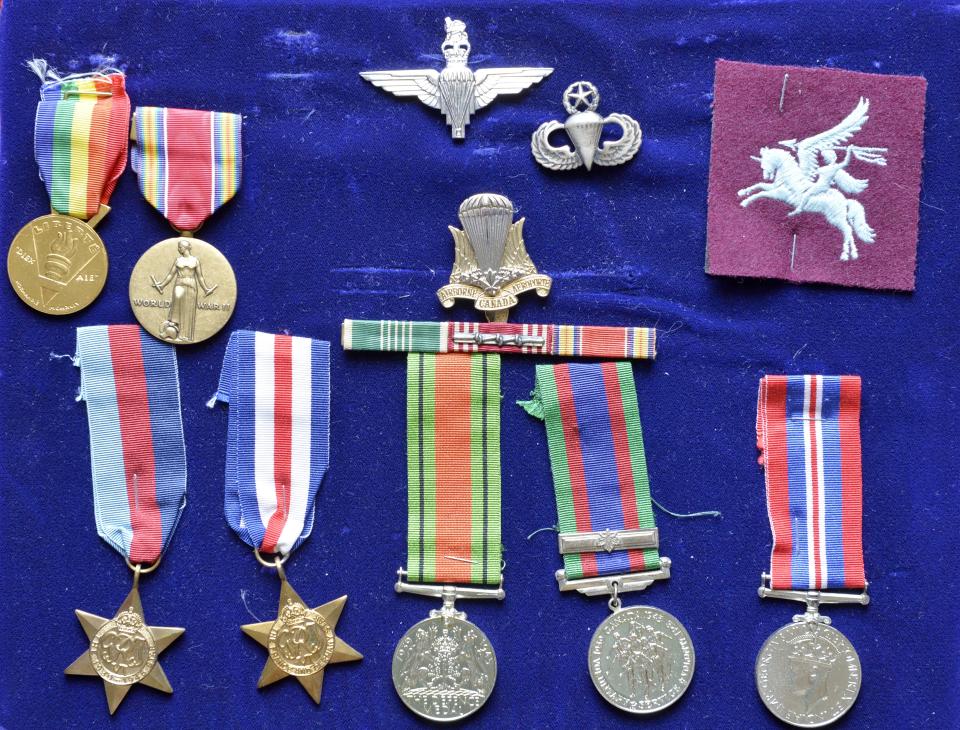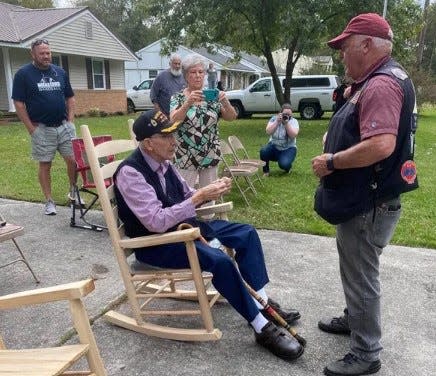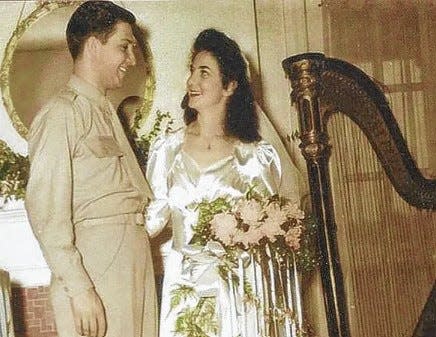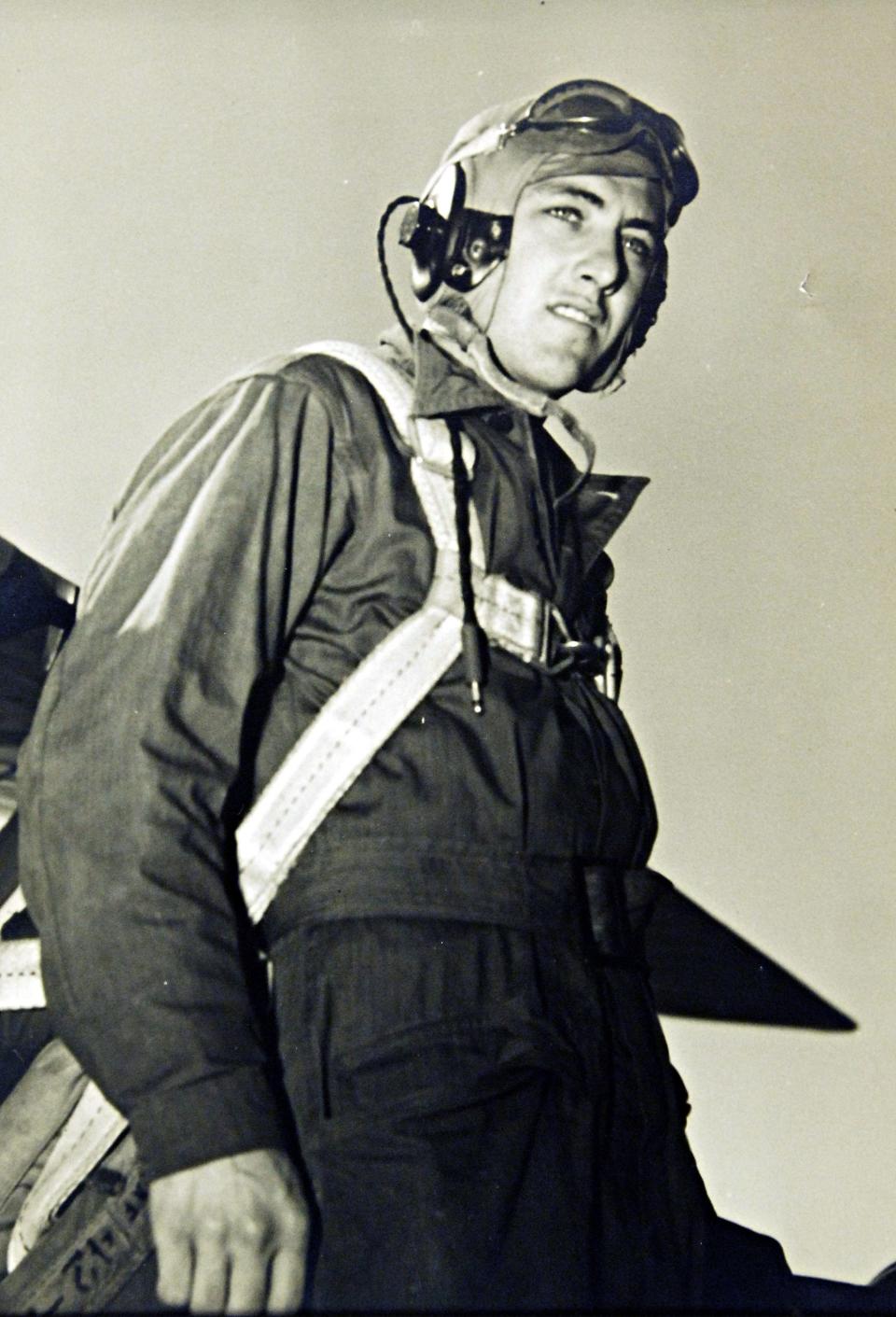Meet five men with Augusta-area connections who forged historic, heroic ties to D-Day
The Augusta area’s long relationship with the U.S. military connects the Garden City and Fort Eisenhower with crucial moments in history, including D-Day, June 6, 1944, when Allied troops stormed French beaches at Normandy to begin the liberation of Western Europe during World War II.
Here are just five out of the many people with Augusta connections who fought the Nazis at Normandy and lived to tell about it.

Leonard Schroeder Jr.
Commissioned as a second lieutenant after graduating college in 1941, “Moose” Schroeder was assigned to Augusta’s then-Camp Gordon while his newlywed high-school sweetheart and their infant son lived in North Augusta.
Later promoted to captain, Schroder, 25, commanded Company F of the 2nd Battalion, 8th Infantry Regiment, 4th Infantry Division. Brig. Gen. Theodore Roosevelt Jr., visiting a hospitalized Schroeder before the battle, urged the young officer’s quick recovery. "Moose, you got to get out because I’m riding on your boat," Roosevelt said. "I want you to get me on the beach in your boat when you go ashore."
Schroeder was the first U.S. soldier to come ashore on a landing craft in the D-Day invasion.

Dennis Trudeau
Before he settled in Columbia County and became a longtime mayor of the city of Grovetown, Trudeau grew up in Minnesota. But after World War II broke out, for higher monthly pay he enlisted in the Canadian military and was assigned to the 1st Canadian Parachute Battalion.
Trudeau parachuted into France on D-Day after having lost his weapon and equipment during the jump. A pattern-bombing sent shrapnel into his legs and back, and he was captured by Germans during a counterattack on a bridge.
At age 94 in 2019, Trudeau was one of 10 former servicemen honored in France on D-Day's 75th anniversary.

Louis Graziano
Graziano returned to his job as a hairstylist after the war, moving to Thomson in 1956. Landing in France during D-Day's third wave, Graziano was a witness to history beyond the invasion.
He served on the staff of General of the Army Dwight D. Eisenhower and supervised soldiers in Reims, France, in providing upkeep to all buildings used by U.S. troops. One building was the Little Red Schoolhouse that became famous as the site where German commanders officially signed their surrender.
Graziano, who turned 101 in February, is believed to be the last living eyewitness to Germany’s formal surrender of World War II.

Tony Tantillo
Tantillo settled in the Augusta area after World War II, running Tantillo’s Market on Laney-Walker Boulevard and helping establish Our Lady of Peace Catholic Church in North Augusta. Born in Palermo, Sicily, Tantillo emigrated to America at age 14 and lived in New York.
He was drafted and assigned to Company A, 1st Battalion, 22nd Infantry Regiment of the 4th Infantry Division, based at Augusta’s Camp Gordon. At USO dances for servicemen at Sacred Heart Catholic Church's social hall in Augusta, he met a local girl, Clara Punaro, leading to their marriage lasting 76 years.
He helped attack German coastal battery positions at Crisbecq and a defensive line at the Quineville Ridge. He also captured two Germans who surrendered to him.
Eleven days after landing in Normandy, Tantillo nearly lost his right hand to shrapnel from a German 88-millimeter artillery shell and was medically discharged a year later.

Jack Connell
The Augusta businessman and civic leader served in in the Georgia House of Representatives from 1969 to his retirement in 2002, with all but six of those years as the House speaker pro tem.
Two days before the D-Day invasion, he and his comrades in the 553rd Squadron, 386th Bombardment Group of the Army Air Force were given orders to return to the United States. They took a vote and chose instead to fight at Normandy.
Connell was a navigator and bombardier aboard a B-26 Marauder.
"We went right over that battleship at 4,000 feet, the most gorgeous sight you've ever seen," Connell said in an interview. "You could see the whole invasion right out in front of you. And we hit that gun emplacement dead on, and we busted them. Busted the fool out of them. I can see it right now. Oh, it was wonderful."
This article originally appeared on Augusta Chronicle: These five men with Augusta-area ties helped change the world on D-Day

